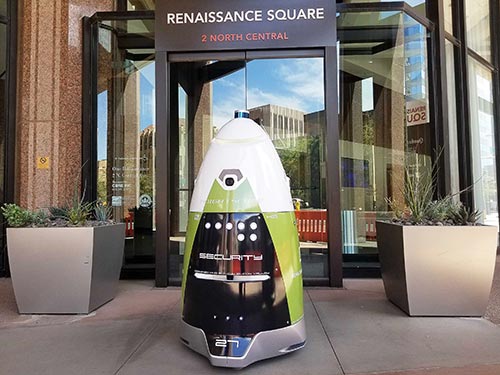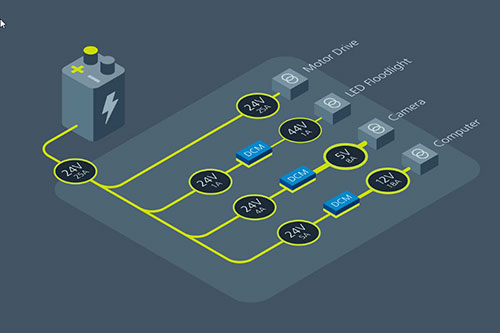
Knightscope’s mobile robots are completely autonomous, using a system of LIDAR, GPS, sonar, IMUs, 4K cameras and high-fidelity audio. The robot has five sensor types—similar to humans but with far greater acuity.
The concept of automated policing began as a science fiction concept years ago, but today Knightscope, Inc. has made it real and impactful in local communities.
Launched in 2013, Knightscope, Inc, a public safety technology services company, was the first in the world to deploy mobile, fully autonomous security robots (ASRs) in public spaces such as shopping centres, car parks and neighbourhood parks. The Knightscope vision was to find a more effective means of deterring crime while minimising risk to law enforcement officers.
Knightscope’s expertise lies within a fusion of robotics, self-driving technology, vehicle electrification and artificial intelligence. Combined, they yield an agile platform upon which numerous types of sensing capabilities and other technologies can be integrated to provide actionable intelligence.
Delivering superior ASR surveillance capability
ASRs are equipped to scan for known threats, allowing companies to reduce workplace violence by recognising terminated employees or those who have been issued criminal trespass warnings. ASRs also provide parking security by using exception monitoring to ID the license plates of cars that don’t belong on site. With their audio feature, ASRs provide two-way communication, allowing the robots to act as a public address system with broadcast capability. This enables them to engage with perpetrators to de-escalate hostile situations.
Power efficiency is paramount for ASRs

A typical mobile robotics application powers a variety of loads ranging from computers to motor drives and cameras. Knightscope powers LIDAR, GPS,sonar, IMUs, 4K cameras and high-fidelity audio and uses Vicor high-density power modules to power these loads. Knightscope sought power that was compact and highly efficient because the ASRs have no airflow or venting. They needed a pure conduction-cooled solution that could use the aluminum skin as a heat sink.
The intense level of computing, communications and sensing places a tremendous burden on the ASRs’ power delivery networks. They must be compact and have high efficiency.
Because the ASRs have no airflow or venting, Knightscope went hunting for a pure conduction-cooled solution that could use the aluminum skin as a heat sink. The company adopted a Vicor DC-DC converter module (DCM3623) because its unique ChiP™ packaging was thermally adept and very small. The DCM’s power density also helped with routing the wiring and cable assembly and increased battery efficiency, performance and runtime.
On the electrical side, the robot required isolation from all of the different power rails. Because there are so many sensors with different EMI signatures, the Vicor DCM™ helped minimise EMI and noise interference.
“The more we’re able to reduce the burden on the battery, the longer runtime we will get,” Stacey Stephens, Co-Founder and Chief Client Officer, Knightscope said. “So, power’s always, always going to be a consideration. And, ultimately, all of this will help us achieve our vision for the company, which is that when an architect sits down to plan a commercial development or a mixed-use space, we’re part of the security check list along with smoke detectors and fire suppression systems.”
It appears there is a new sheriff in town, and the name is Knightscope.


